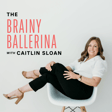
61. Understanding Hypermobility in Dancers with Dr. Linda Bluestein, MD
In this enlightening episode, we’re joined by Dr. Linda Bluestein, MD — a former ballet dancer turned physician and founder of Hypermobility MD and Bendy Bodies. Dr. Bluestein is a leading expert in hypermobility disorders, especially among dancers, and she’s passionate about educating and empowering those living with conditions like hypermobile Ehlers-Danlos Syndrome (hEDS).
We dive into:
- What inspired Dr. Bluestein to specialize in hypermobility in dancers
- The difference between flexibility and hypermobility
- How to tell if you might have hypermobility or hypermobility spectrum disorder (HSD)
- The distinctions between HSD and Ehlers-Danlos Syndrome
- Common signs and symptoms dancers should watch for
- What steps to take if you suspect you're hypermobile
- Dr. Bluestein’s M.E.N.S.P.M.S. framework for managing hypermobility
- Why early care is key to a sustainable dance career
- Myths about hypermobility that need busting
- How dance teachers can support hypermobile dancers
- How to find medical professionals who understand dancers' needs
Whether you're a dancer, teacher, or parent, this episode is packed with practical insights, expert advice, and actionable steps for navigating hypermobility in the dance world.
Connect with Dr. Linda Bluestein:
SUBSTACK: https://hypermobilitymd.substack.com/
WEBSITE: https://www.hypermobilitymd.com/
INSTAGRAM: https://www.instagram.com/hypermobilitymd/
PODCAST: https://www.bendybodiespodcast.com/
Links and Resources:
IADMS: https://iadms.org/find-a-provider/
Doctors for Dancers: https://doctorsfordancers.com/
Aloha Nutrition Bars: 20% off using code: BRAINYBALLERINA
Get your copy of the Intentional Career Handbook
Let’s connect!
My WEBSITE: thebrainyballerina.com
INSTAGRAM: instagram.com/thebrainyballerina
Questions/comments? Email me at caitlin@thebrainyballerina.com
This episode was brought to you by the Pivot Ball Change Network.


